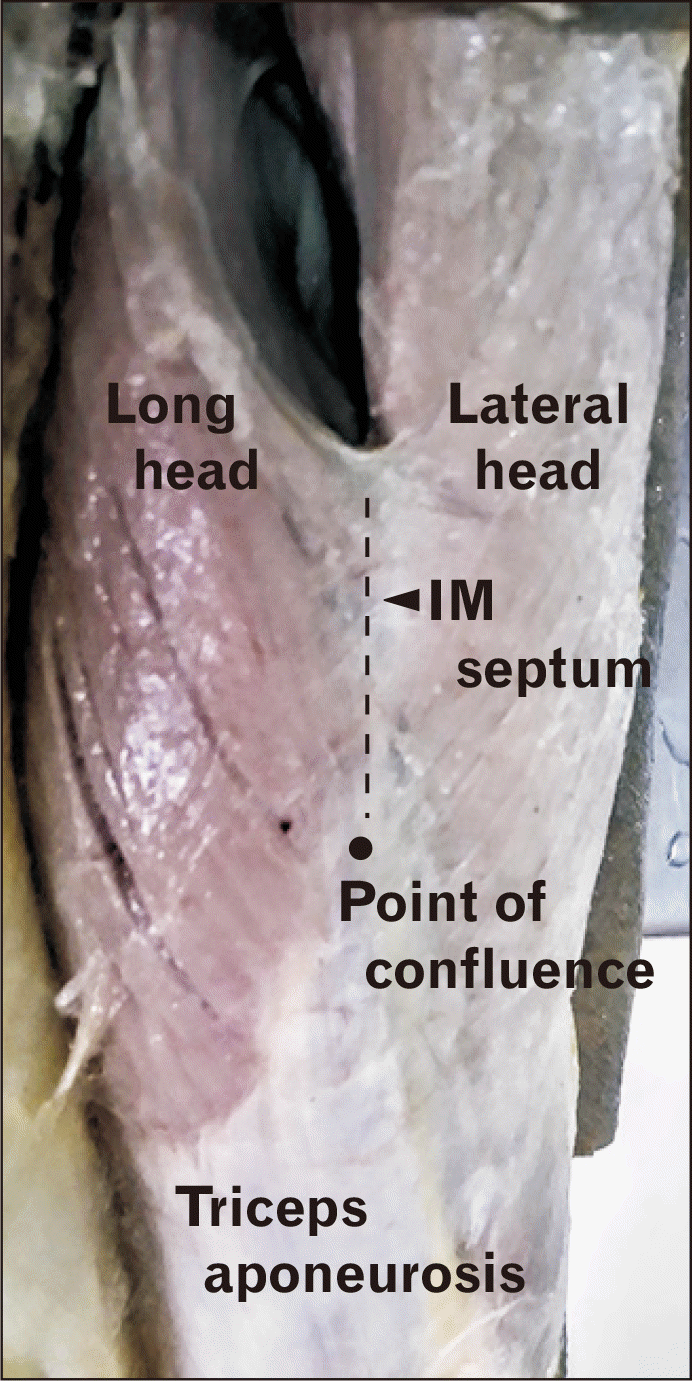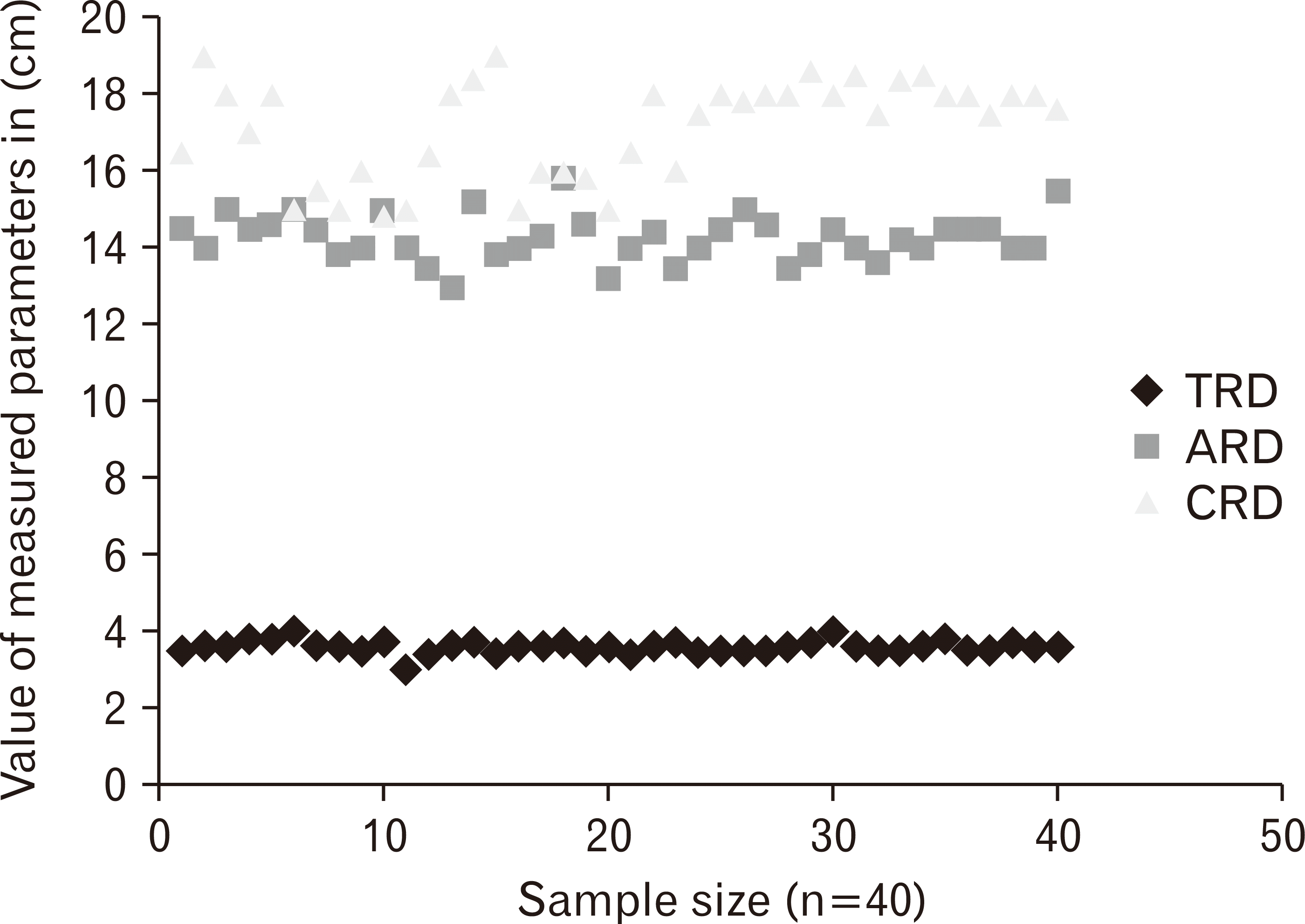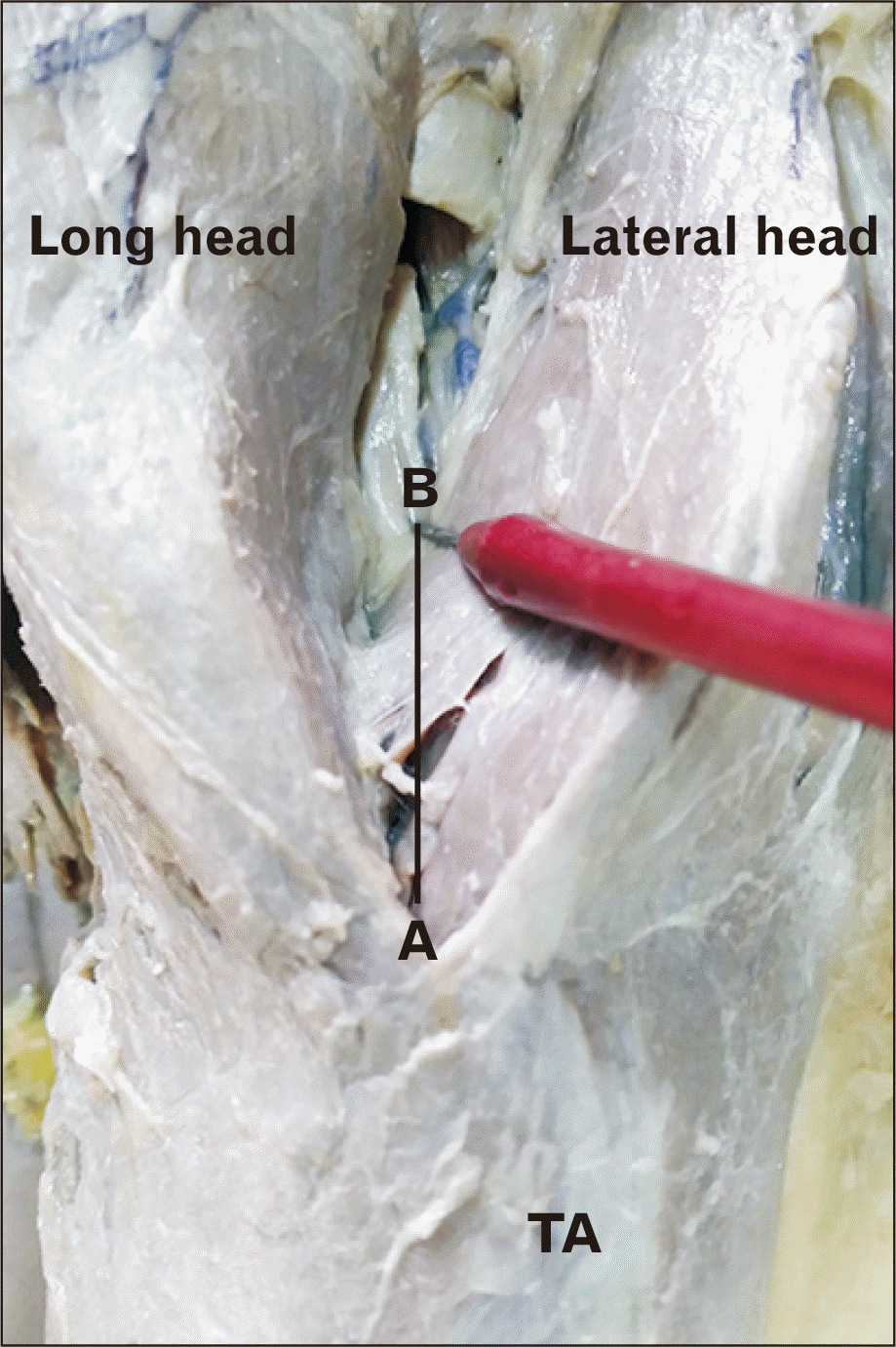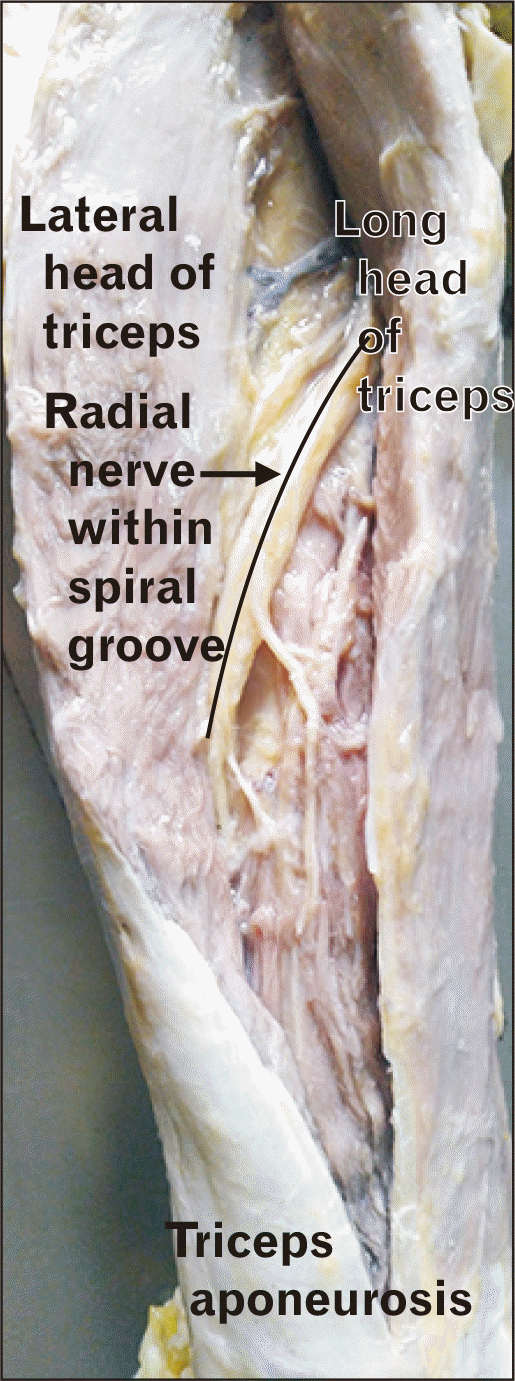1. Fleming P, Lenehan B, Sankar R, Folan-Curran J, Curtin W. 2004; One-third, two-thirds: relationship of the radial nerve to the lateral intermuscular septum in the arm. Clin Anat. 17:26–9. DOI:
10.1002/ca.10181. PMID:
14695584.

2. Standring S. Gray H, Standring S, Ellis H, Berkovitz BKB, editors. 2005. Upper arm. Gray's anatomy: the anatomical basis of clinical practice. 39th ed. Elsevier Churchill Livingstone;Edinburgh: p. 851–8.
4. Shao YC, Harwood P, Grotz MR, Limb D, Giannoudis PV. 2005; Radial nerve palsy associated with fractures of the shaft of the humerus: a systematic review. J Bone Joint Surg Br. 87:1647–52. DOI:
10.1302/0301-620X.87B12.16132. PMID:
16326879.
5. Wang JP, Shen WJ, Chen WM, Huang CK, Shen YS, Chen TH. 2009; Iatrogenic radial nerve palsy after operative management of humeral shaft fractures. J Trauma. 66:800–3. DOI:
10.1097/TA.0b013e31816142cf. PMID:
19276756.

6. Hoppenfeld S, De Boer PG, Buckley R. 2009. Surgical exposures in orthopaedics: the anatomic approach. 4th ed. Wolters Kluwer/Lippincott Williams & Wilkins Health;Philadelphia:
8. Seigerman DA, Choung EW, Yoon RS, Lu M, Frank MA, Gaines LC, Liporace FA. 2012; Identification of the radial nerve during the posterior approach to the humerus: a cadaveric study. J Orthop Trauma. 26:226–8. DOI:
10.1097/BOT.0b013e31821d0200. PMID:
21918485.
9. Artico M, Telera S, Tiengo C, Stecco C, Macchi V, Porzionato A, Vigato E, Parenti A, De Caro R. 2009; Surgical anatomy of the radial nerve at the elbow. Surg Radiol Anat. 31:101–6. DOI:
10.1007/s00276-008-0412-8. PMID:
18795220.

10. Bono CM, Grossman MG, Hochwald N, Tornetta P 3rd. 2000; Radial and axillary nerves. Anatomic considerations for humeral fixation. Clin Orthop Relat Res. (373):259–64. DOI:
10.1097/00003086-200004000-00032. PMID:
10810486.
11. Carlan D, Pratt J, Patterson JM, Weiland AJ, Boyer MI, Gelberman RH. 2007; The radial nerve in the brachium: an anatomic study in human cadavers. J Hand Surg Am. 32:1177–82. DOI:
10.1016/j.jhsa.2006.07.001. PMID:
17923300.

12. Chou PH, Shyu JF, Ma HL, Wang ST, Chen TH. 2008; Courses of the radial nerve differ between Chinese and Caucasians: clinical applications. Clin Orthop Relat Res. 466:135–8. DOI:
10.1007/s11999-007-0019-0. PMID:
18196385. PMCID:
PMC2505296.
13. Cox CL, Riherd D, Tubbs RS, Bradley E, Lee DH. 2010; Predicting radial nerve location using palpable landmarks. Clin Anat. 23:420–6. DOI:
10.1002/ca.20951. PMID:
20196128.

14. Kamineni S, Ankem H, Patten DK. 2009; Anatomic relationship of the radial nerve to the elbow joint: clinical implications of safe pin placement. Clin Anat. 22:684–8. DOI:
10.1002/ca.20831. PMID:
19637299.

15. Guse TR, Ostrum RF. 1995; The surgical anatomy of the radial nerve around the humerus. Clin Orthop Relat Res. (320):149–53. DOI:
10.1097/00003086-199511000-00025.

16. Gerwin M, Hotchkiss RN, Weiland AJ. 1996; Alternative operative exposures of the posterior aspect of the humeral diaphysis with reference to the radial nerve. J Bone Joint Surg Am. 78:1690–5. DOI:
10.2106/00004623-199611000-00008. PMID:
8934483.

17. Lusweti V, Oluoch R, Ayumba BR, Njoroge A, Elbadawi MGY. 2019; The course of the radial nerve in relation to the humerus: a cadaveric study in a Kenyan adult population. East African Orthopaedic Journal. 13:20–5.
18. Arora S, Goel N, Cheema GS, Batra S, Maini L. 2011; A method to localize the radial nerve using the 'apex of triceps aponeurosis' as a landmark. Clin Orthop Relat Res. 469:2638–44. DOI:
10.1007/s11999-011-1791-4. PMID:
21286885. PMCID:
PMC3148375.

19. Ashfaq Hasan S, Rauls RB, Cordell CL, Bailey MS, Nguyen T. 2014; "Zone of vulnerability" for radial nerve injury: anatomic study. J Surg Orthop Adv. 23:105–10. DOI:
10.3113/JSOA.2014.0105. PMID:
24875341.

20. Prasad M, Isaac M, Premkumar PS. 2018; Anatomic landmarks to identify the radial nerve during the posterior approach of the humerus: a cadaveric study. J Clin Diagn Res. 12:1–4. DOI:
10.7860/JCDR/2018/37922.12275.







 PDF
PDF Citation
Citation Print
Print





 XML Download
XML Download